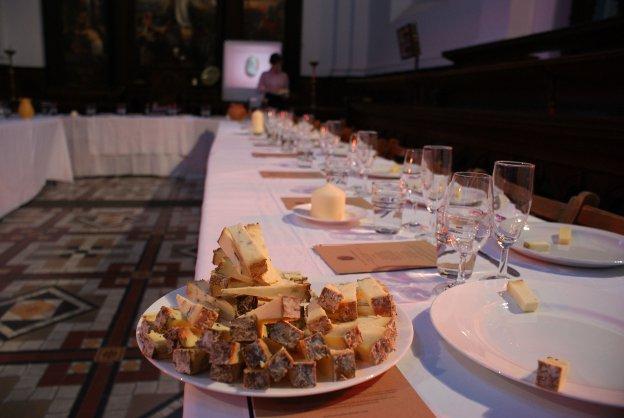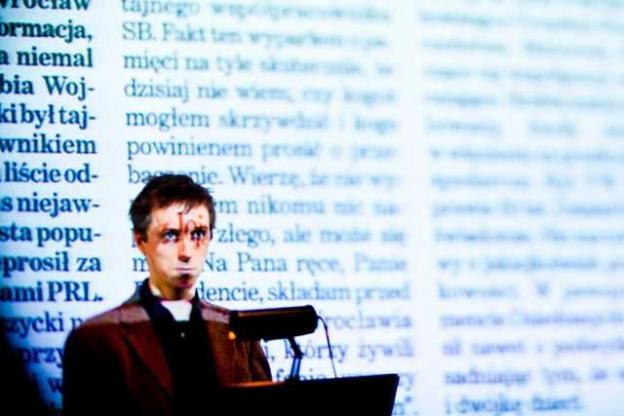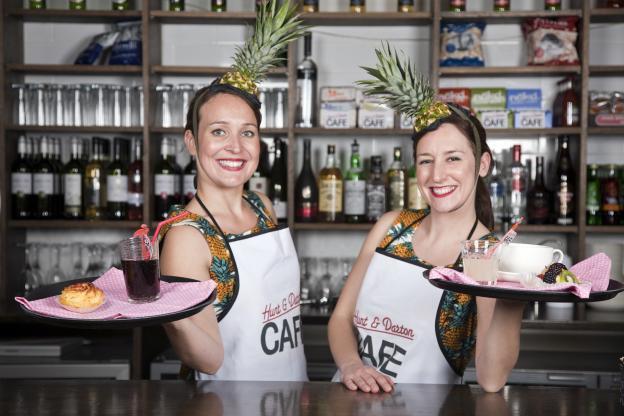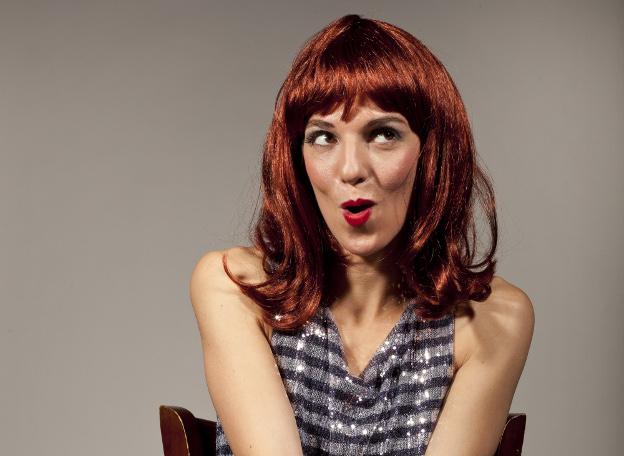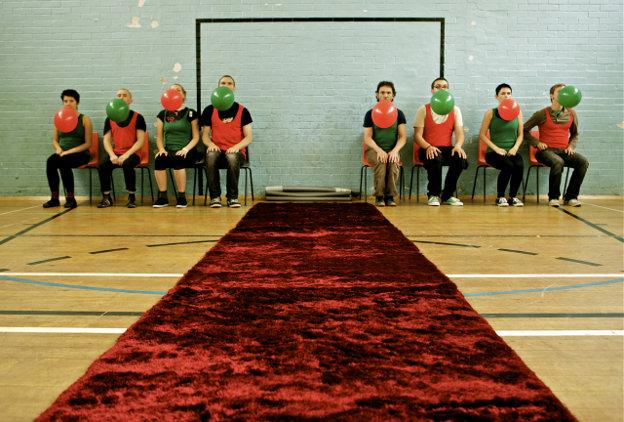The Guild of Cheesemakers has been created by Stand + Stare Collective and Emma Callander, with the concept, script and performance created through a process that saw them work with artisan food producers in the UK. At the Edinburgh Festival Fringe the Guild of Cheesemakers met in the café of Summerhall.
Invited to a cheese and wine tasting evening, the audience find the tables set with glasses, place names and low-lit lamps. We are the Guild, we are told, and we have been meeting every year. This evening’s beautifully printed order of service is handed to us by the host Susannah Gray, a jovial woman who obviously enjoys her position of Beadle.
The evening begins with a few toasts to the Guild, the Queen and Boris Johnson, and the slicing of the cheese with the ceremonial dagger. It is Master Terry Fernsby’s turn this year and the audience member in his seat gets to do the honours. The cheese tasting commences! Each element is introduced by an expert – real experts from local cheese shops and bakeries. They tell us all about the processes and the particulars with great enthusiasm as they hand out bread or as we sniff and munch on our cheese.
The first tasting is Anster, which is accompanied with a Sauvignon Blanc and White Sourdough.
The hostess has just been taking a course in wine, with a couple of other members of the Guild apparently, as she gestures towards them and gives the impression they may need to jump in with their wine knowledge at any point. The Guild have been going through the archives and came across a lovely film showing the old age tradition of cheese making. The Guild of Cheesemakers begins as a legit evening with experts and fine food, everyone getting comfortable and muttering to each other about the delights of cheese.
Each expert opens up the floor to questions; people can ask about process, about ageing time, about the mould or the rennet. One audience member has a real interest in the film; he asks if it can be played again. The host is hesitant but allows it, and her son David (a recent graduate of Edinburgh University – a very quiet technical wizz) brings on the projector once more. The audience member gets out of his seat and waits for the film to get to his desired spot – ‘Stop,’ he says, and looks at the film, then looks at us with a huge grin. Here the real cheese tasting evening slips into fiction.
The second tasting is a Cambus O’May with a apple brandy and crisp bread.
Without spoiling the story, I can say we are lead into a debate on the concept of extending our existence, and are given the option to replicate a cheese that can stop the ageing process or to destroy it. The audience are given the floor and everyone chips in their pros and cons – is it justified by the fact that we already extend people’s lifespans through medicine? How would we feel about outliving our children? What would be the right age to freeze at? Should we toy with nature? We come to a vote, and I am sure there are two endings to this work, depending on the audience’s final decision.
The third tasting is a double Gloucester with Conde de Cron and a coarse rye bread.
The detail of the event – the integration of real experts, their knowledge and character – gives the experience a brilliant sense of authenticity. The overlaying of fact and fiction within the text is finely tuned, but overall the narrative does stay a little far-fetched and it is a challenge for the actors to deliver it. The question posed to us is interesting and relevant: some audience members call out and some discuss between themselves; a real buzz is generated with opposing views. We vote, and I find myself confirming my decision on the walk home, rolling it around in my head – the taste of cheese lingering on my tongue.

